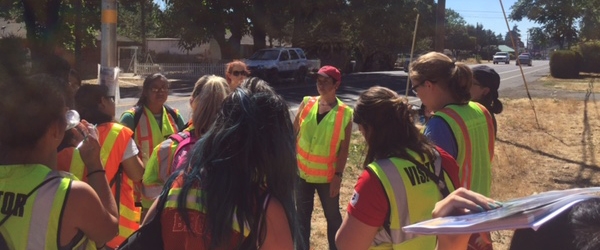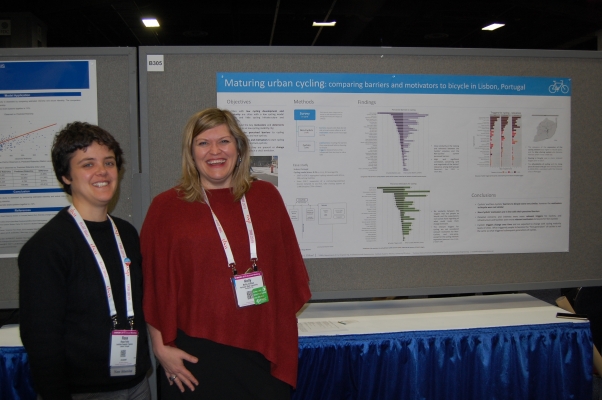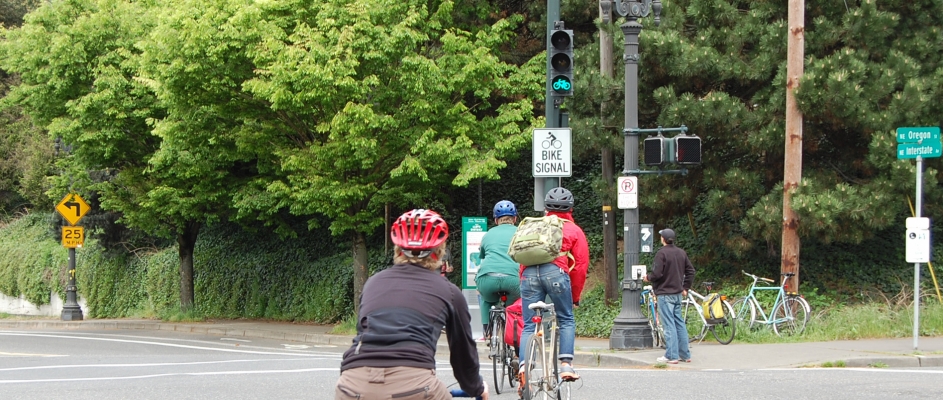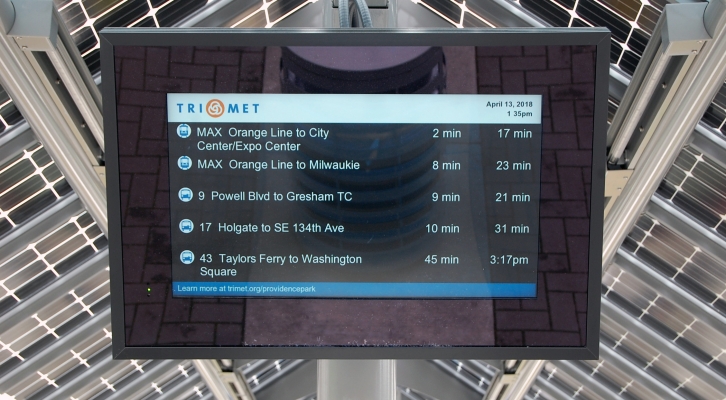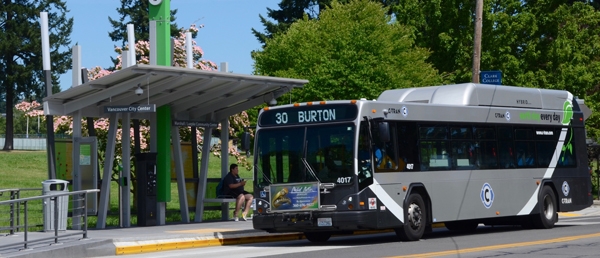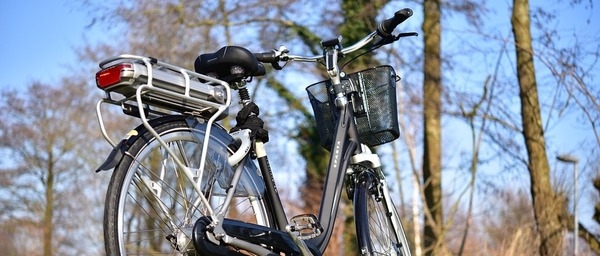- Download the Final Report (PDF) - includes all assignments, syllabi, etc.
- Download the Project Brief (PDF)
We’ve got a new curriculum guidebook for undergraduate and graduate students in transportation: a comprehensive set of class exercises to learn pedestrian observation and data collection strategies.
Addressing the challenges of an evolving transportation industry means embracing the study of non-motorized travel and preparing the new workforce for it. Funded by our university research consortium National Institute for Transportation and Communities (NITC), this guidebook was designed to enable instructors with little or no experience to integrate pedestrian-related curriculum into their teaching. While accessibility is a key feature...
Read moreThe latest Small Starts study from the National Institute for Transportation and Communities (NITC) offers sustainable road building materials for rural infrastructure, from an unlikely source.
Approximately 7,000 years ago, the eruption of Oregon's Mt. Mazama blanketed the Klamath Basin region with a thick layer of volcanic ash. Matthew Sleep, an associate professor of civil engineering at Oregon Tech, investigated the use of this ash as a natural pozzolan for soil stabilization and unpaved roadway improvement. He found that the ash, prevalent in Southern Oregon, has the potential to be used for gravel roadway dust abatement.
Portland cement, the current industry standard, is a basic ingredient in concrete and mortar. A caustic material that causes chemical burns, it was first developed in the 19th century. It’s time for a new approach.
A...
In recent decades, cities have become increasingly motivated to invest in infrastructure that supports multimodal options like walking, biking and public transit. Trip generation, the first step in conventional four-step forecasting models, is a central figure in determining how those investments are made.
However, when considering pedestrian and bicycling travel, the current practice is usually to either leave those trips out of the model altogether, or to simply present them as a mode choice option that is not analyzed further. In short, they’re car-centric.
Without reliable trip generation rates for anyone but drivers, an accurate transportation impact is difficult to predict. Certain land uses will draw far more walkers, cyclists and transit riders than drivers. Cities...
Read moreAddressing Bicycle-Vehicle Conflicts with Alternate Signal Control Strategies -and-
Improving Bicycle Crash Prediction for Urban Road Segments
Sirisha Kothuri, a Portland State University research associate, has recently completed two distinct studies taking different approaches to advancing bicycle safety. Kothuri will lead a Sept. 13 workshop on Bicycle/Pedestrian Focused Signal Timing Strategies along with Peter Koonce, the division manager of Signals & Street Lighting for the City of Portland. The half-day workshop will be part of Transportation and Communities 2018, a two-day...
Read moreStephanie Nappa, University of Oregon
LiveMove Student Group | LinkedIn
We're shining our student spotlight this month on Stephanie Nappa, president of the University of Oregon student group LiveMove. On May 24, LiveMove will host a speaker series event with Oboi Reed, the Executive Director of Equiticity, to discuss equity in biking.
Tell us about yourself:
I’m a former engineer and chemist who began studying planning once I learned there was a career that would allow me to talk endlessly about transportation systems without simply receiving polite nods. Currently, I’m about to finish my Master of Community and Regional Planning degree from the University of Oregon, where I’ve focused my studies on active transportation. This past summer I had the opportunity to take a study abroad course on bicycle transportation in...
Read moreEvery day transit riders ask the same question: when’s the next one coming? To answer this question, transit agencies are transitioning to providing real-time transit information through smartphones or displayed at transit stops.
Real-time transit information improves the reliability and efficiency of passenger travel, through:
- shorter perceived and actual wait times,
- an increased feeling of safety,
- increased ridership, and
- a lower learning...
livability
noun liv·abil·i·ty \ ˌli-və-ˈbi-lə-tē \
"Livability" is a broadly used term encompassing all the factors that add up to a community’s quality of life. It’s a key goal in many land use and transportation plans, but it's not always clear how to reach that goal. What makes people feel that their neighborhoods are livable?
Researchers Rebecca Lewis and Robert Parker of the University of Oregon surveyed over three thousand...
Read moreThe National Institute for Transportation and Communities (NITC) is proud to announce our two Spring 2018 Dissertation Fellows. Hear from the fellows about their projects below, or learn how to apply for funding through the NITC Dissertation Fellowship Grant here. Proposals for Summer 2018 Dissertation Fellowships are due June 1, 2018.
Vivian Miller, University of Texas at Arlington
In November 2018, Vivian Miller published Investigating Barriers to Family Visitation of Nursing Home Residents: A Systematic Review, a paper based on her NITC-funded dissertation, in the Journal of Gerontological Social Work.
 Vivian Miller is a third-year doctoral candidate in the School of Social Work at the University of Texas at Arlington. Her primary research interests are in...
Vivian Miller is a third-year doctoral candidate in the School of Social Work at the University of Texas at Arlington. Her primary research interests are in...
If more drivers switched seats to a bicycle, there would be immediate and tangible benefits on the road. Widespread adoption of bike commuting could improve public health through increased physical activity and reduced carbon emissions, as well as ease the burden on congested roads. However different lifestyle demands, physical ableness, and varied topography create an unequal playing field that prevents many from replacing their car trips.
Electric bicycles (e-bikes) are a relatively new mode of transportation that could bridge this gap. If substituted for car use, e-bikes could substantially improve efficiency in the transportation system while creating a more inclusive biking culture for people of all ages and abilities.
A newly published NITC study by John MacArthur of...
Read moreThe most expensive and critical links in our transportation network are its bridges. Historical and contemporary bridge failures have highlighted our reliance on these structures. While the nation’s bridge management system is robust and well administered, the tools needed to evaluate individual bridges to determine their condition—whether for asset management or in response to a significant loading event such as the imminent Cascadia Subduction Zone earthquake in the Pacific Northwest— are currently highly specialized.
NITC researcher C.J. Riley, a civil engineering professor at the Oregon Institute of Technology, has developed a cost-effective, accurate, and easily deployed evaluation tool using widely available mobile technology (specifically iPods) to measure the dynamic structural response of a bridge subjected to harmonic forcing.
... Read more
